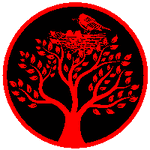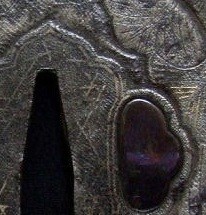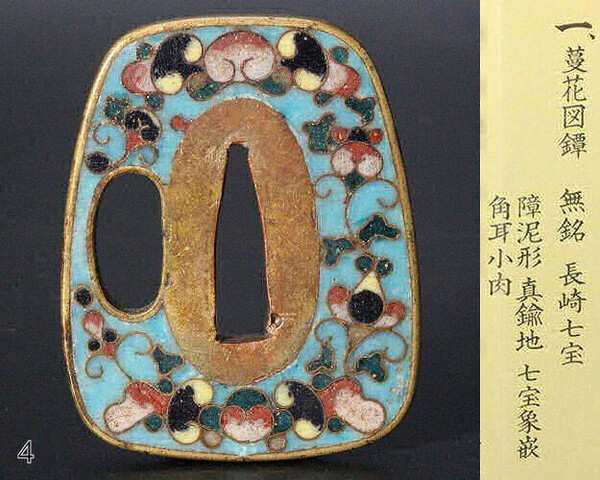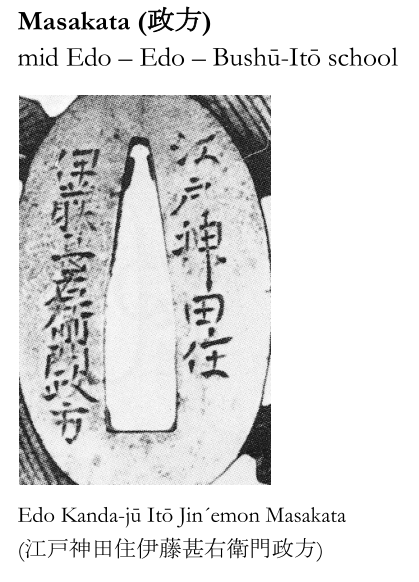-
Posts
783 -
Joined
-
Last visited
-
Days Won
4
Content Type
Profiles
Forums
Events
Store
Downloads
Gallery
Everything posted by MauroP
-
Kaga-kinkō or Shōnai-kinkō?
-
100% agree with what Dale says. If a tsuba fits a Shōami attribution this is one (and many doesn't...)
-
Usually the two collaborating artisans signed each on the opposite sides of the tsuba. What about your tsuba, Grev?
-
-
- 31 replies
-
- 14
-

-

-
Nanban and Hizen attributions overlap for a certain extent (though some tsuba are clearly Hizen and not Nanban). Jakushi could also be be a legit call, but usually Jakushi tsuba are signed and the vast majority of them represent dragons or Chinese landscapes. A non-toban shape of seppa-dai makes me lean towards a Nanban attribution (but don't take any attribution too seriously...).
-
The inlays look quite amatourish, possibly a Shōwa period tsuba?
-
Have space aliens ever landed on Earth? Who knows... Possible? Yes, of course! Likely? No, of course! Have iron tsuba been casted in Edo period? The same as above... that's all IMHO.
-
Markus Sesko's "Signatures of Japanese Sword Fittings Artists" lists 3 Nobukuni and 5 Masatoshi entrances, but never together...
-
I was quite puzzled by the attribution of this tsuba to Hirata (平田), as in my understanding, the Hirata school is typically associated with suaka, yamagane, or shinchū-ji tsuba, often featuring shigure-yasuri or okina-yasuri file marks, and sometimes an odawara-fukurin. So, I did a bit of research and found that most "Hirata" attributions seem to originate from Bonhams auctions. None appear to be papered by the NBTHK, and only a few are signed by Hirata Harunari (8th generation, late Edo) or Hirata Haruaki (Meiji period). Perhaps there is some confusion with Hirado (平戸)? Here some images: 1. signed Narikazu (hard to believe he's the 2nd generation Hirata master) 2. a typical Hirata piece 3. a shippō-zōgan tsuba papered as Hirado 4. a similar piece papered as Nagasaki shippō
-
I wish to suggest Nagasaki shippō as a more likely attribution...
-
Dan, please go here and read all the stuff... https://www.openmovportal.ca/argus/final/Portal/Main.aspx?component=AAFG&record=a7450643-c397-4d2e-a9a6-0cea5b180791
-
Thanks God the Museum of Vancouver also states that the material is copper and/or silver alloy (?). So no iron casting involved (or clearly the museum curators don't know anything). https://www.openmovportal.ca/argus/final/Portal/Main.aspx?component=AAFG&record=a7450643-c397-4d2e-a9a6-0cea5b180791
-
Actually the signature looks like 奈良重光 - Nara Shigemitsu, but I was unable to find this signature in my books.
-
The paper says the signature is Sashū jū Toshiuji (佐州住利姓).
-
Now I understand why Daruma shows such a sad face....
-
Here the genealogy of Hōan school according to "Genealogies of Japanese tsuba and tōsō-kinkō Artists" by Marcus Sesko. (the best I can do without a flatbed scanner)
-
Unfortunately zōgan means just "inlay", and does not describe the technique used to make it ...
-
Hi, I suggested Hizen relying on style alone, but of couse other schools/traditions can be considered. I assume the tsuba in made in iron, and the decoration is silver and gold nunome-zōgan (may be wrong). I'm unable to see true channels where inlay is missing, just minor wears in gin-nunome-zōgan could eventually result in that images. Finally, in my humble opinion the “anecdotal” example of what Alex consider to be representative of Kaga-zōgan is indeed a fair example of Kyō-kenjō (including the kin-zōgan kaō).
-
-
The problem is not in the tsuba.... it's in our brain. Pareidolia is the tendency of human mind to give meaningful interpretation of a visual input. That's my opinion.
-
The plant depicted is 樅 - momi - Japanese fir. see: https://www.dropbox.com/scl/fi/gew1fwujq25us4bpahzst/FHJ.pdf?rlkey=xqwem1jg9d243ej1wmub7a0hr&st=l12r1vch&dl=0
-
I don't think it's just an overcleaned tsuba. If the iron patina was abraded surely the nunome-zōgan would have been abraded as well. Nunome-zōgan over silver is unusual, nontheless silvered iron tsuba do exist (here one of mines).
-
I'm leaning towards gimei, the third kanji and the kaō show more inconsistencies. Anyways a nice piece.



















